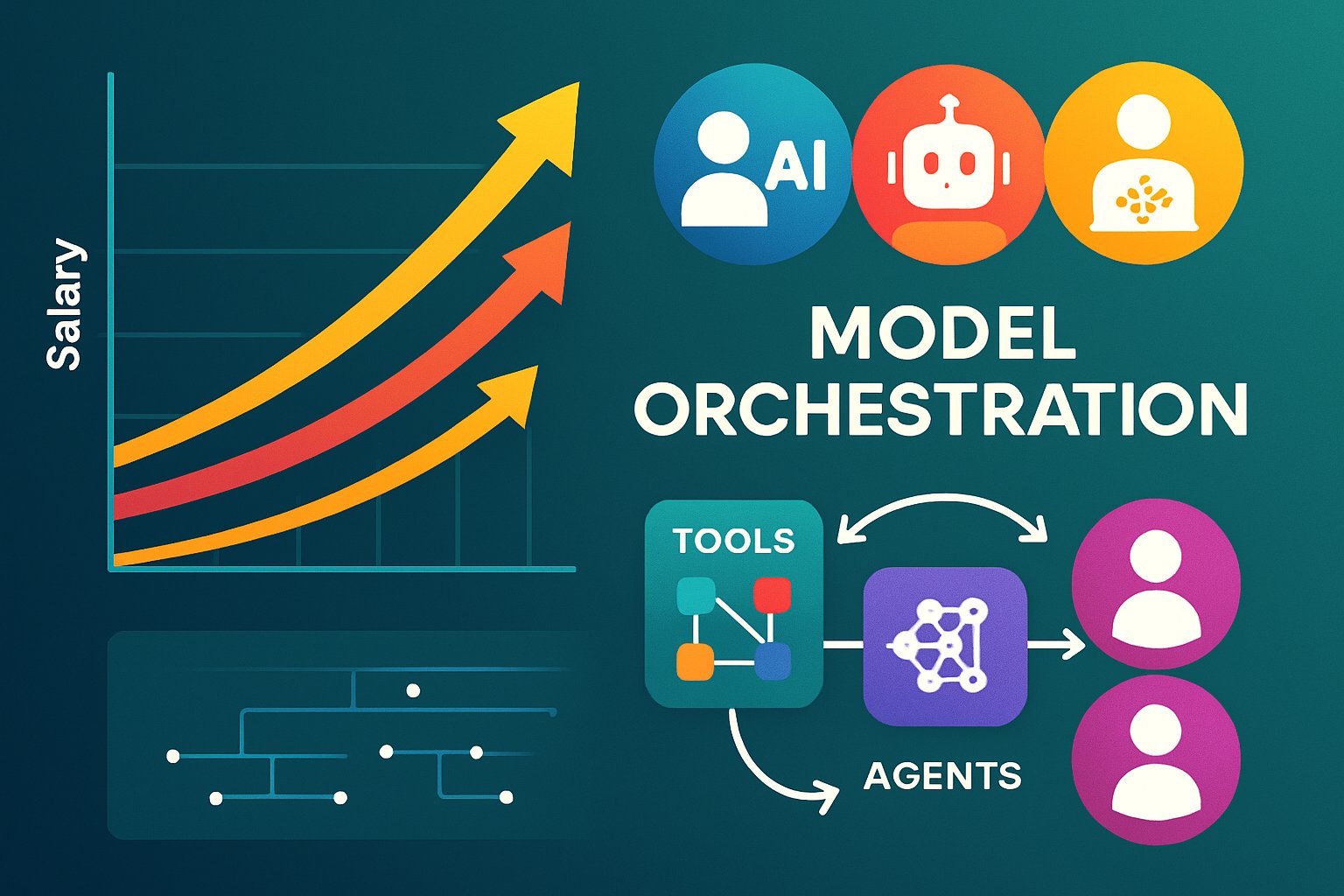
AI CERTS
2 months ago
Why context engineering now dominates agentic AI
However, expanded context windows introduce cost, latency, and governance questions. Therefore, professionals require updated practices, measurable metrics, and verified skills. The following report unpacks the trend, offers technical guidance, and highlights the AI+ Prompt Engineer Level 2™ certification for readers seeking formal validation.

Why Context Engineering Matters
OpenAI, Anthropic, and Google now support million-token windows. Consequently, agents can ingest product catalogs, contracts, and code bases in one call. Yet careless stuffing increases distractors and costs. Studies on Agentic Context Engineering (ACE) show 10.6% accuracy gains when contexts remain structured and concise. In contrast, naive dumps hurt performance.
Industry voices echo those findings. LangChain engineers call many agent failures “context failures.” Anthropic’s guide urges builders to “find the smallest high-signal set.” Meanwhile, companies advertise “Staff Context Engineer” roles paying up to $240k. These signals confirm organizational demand.
Structured information curation, not longer prompts, delivers reliability. Additionally, agile workflow design depends on repeatable context patterns. These realities underscore the discipline’s importance.
Reliable results depend on intentional context flows. However, understanding fundamental components is the next step.
Core Concepts And Types
Context spans several layers. First, model context includes the system prompt, recent messages, and tool schemas. Second, session state captures short-term facts, such as user preferences. Third, long-term stores house historical records across sessions. Additionally, tool outputs flow back as fresh input.
Effective model orchestration coordinates these layers without overwhelming token budgets. Techniques include summarization, retrieval augmentation, and sub-agent delegation. Furthermore, progressive disclosure keeps heavyweight evidence outside the working window until needed.
The following list summarizes key context types:
- Transient model context: system rules and immediate dialogue.
- Short-term session state: task-specific variables.
- Long-term memory store: evergreen knowledge and personalization data.
- Tool feedback: API, search, or code execution results.
Each layer demands governance over provenance, freshness, and privacy. Consistent taxonomy helps teams measure token use and latency impacts.
These building blocks establish the foundation. Next, we examine practical techniques that deliver results.
Key Techniques In Practice
Engineers increasingly apply four repeatable moves: write, select, compress, and isolate. Initially, agents write observations outside the main window. Subsequently, selectors inject only high-signal snippets. Compressors summarize older data to curb drift. Finally, isolators spin up sub-agents for specialized subtasks.
Moreover, just-in-time retrieval fetches evidence when the agent requests it, reducing upfront cost. Summarization middleware within LangGraph automates compaction and tracing. Nevertheless, teams must watch for context rot, where iterative summaries introduce errors.
AI prompting still matters during template definition. However, templates now function as one component inside larger pipelines. Precise prompts guide summarizers, evaluators, and routing logic, ensuring coherent flows.
Mastering these patterns boosts reliability while respecting budgets. Yet market forces also influence adoption.
Market Signals And Roles
Job boards list hundreds of “Context Engineer” openings across fintech, education, and healthcare. Built In recently featured a Staff role at MagicSchool offering $205k–$240k. Meanwhile, startups like Context Space market “context-first” orchestration services.
Salary premiums reflect the scarcity of practitioners skilled in workflow design and model orchestration. Furthermore, ACE benchmark gains quantify direct business value. Consequently, recruiters now prioritize trace tooling, retrieval metrics, and evaluation experience.
Professionals can differentiate themselves through the AI+ Prompt Engineer Level 2™ program, which validates advanced context skills alongside modern AI prompting techniques.
Labor-market momentum confirms the discipline’s traction. However, benefits arrive with notable challenges.
Benefits And Key Challenges
Structured contexts deliver several advantages:
- Higher accuracy: ACE papers report +10% benchmark gains.
- Compliance control: policies injected at runtime enforce regulations.
- Scalable reuse: context packs accelerate new domain launches.
Nevertheless, issues persist. Million-token calls can take a minute and cost dollars per request. Additionally, summarization may cause context collapse, eroding fidelity. Governance of provenance, privacy, and audit trails remains complex.
Therefore, teams instrument token budgets, latency, and collapse rates. Observability tools such as LangSmith provide lifecycle tracing. Consequently, challenges become measurable and fixable.
Understanding hurdles prepares teams for architecture decisions. The following stack blueprint offers actionable guidance.
Building A Robust Stack
Mature stacks pair retrieval, memory, orchestration, and observability. Engineers start with a vector store like Pinecone or Milvus. Next, summarization pipelines compress completed steps. LangChain or LangGraph supply lifecycle hooks for model orchestration. Additionally, eval suites trace context quality across calls.
Moreover, privacy filters strip sensitive data before storage. Governance layers log every context mutation for audits. Meanwhile, caching strategies guard against runaway costs when context bursts occur.
Teams also maintain dashboards showing:
- Context token count per task.
- Retrieval precision at 5.
- Latency percentile across context sizes.
- Source coverage percentage.
Such metrics align developers, product leaders, and compliance officers. Robust infrastructure enables predictable workflow design.
With foundations set, attention turns to future trends and actions.
Future Outlook And Actions
Context windows will keep growing; however, economic and cognitive limits remain. Vendors explore hierarchical memory and adaptive compression to offset costs. Academic groups plan multi-vendor reliability studies to map failure regimes.
Meanwhile, industry influencers predict “context packs” marketplaces, where domain experts sell curated token bundles. Consequently, market differentiation may pivot on context quality rather than raw models.
Professionals should pursue continuous learning, adopt trace tooling, and share patterns with the community. Additionally, securing the AI+ Prompt Engineer Level 2™ credential signals readiness for advanced agent systems.
These developments indicate an evolving, yet promising landscape. However, rigorous practice remains essential for sustained success.
Conclusion. Context engineering now drives real agent value through structured information delivery, measurable metrics, and specialized roles. Moreover, long context windows and orchestration tools amplify its impact. Nevertheless, practitioners must balance accuracy, cost, and governance. Therefore, adopt proven patterns, instrument your stacks, and validate expertise with industry certifications. Start refining your contexts today and lead the next wave of reliable AI innovation.



